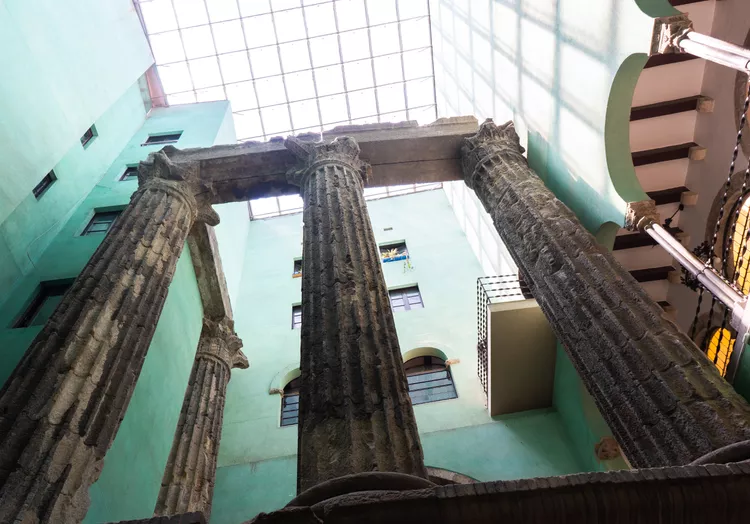1. Overview of Barcelona’s Roman Heritage
Barcelona, once a colony established by the Roman Emperor Augustus, offers a glimpse into its rich Roman past through various impressive landmarks. This article explores key Roman sites across the city and highlights the city’s historical relevance in the Roman Empire.
2. Major Roman Sites in Barcelona
As you explore Barcelona’s Roman heritage, focus primarily on the Gothic Quarter, where ancient structures mingle seamlessly with modern-day life. Here are some of the most significant Roman remains to discover:
Having begun life as a colony established by the Roman Emperor Augustus between 15-10 BC on the small hillock of Mons Taber, Barcelona continued to be part of the Roman Empire for over 400 years. An impressive smattering of Roman landmarks and artifacts can still be viewed today, though many have been absorbed into the framework of later buildings and structures.
Barcelona’s Roman sights are centered upon the Barrio Gòtico, particularly in the area around the La Seu Cathedral and along the edge of Via Laietana, where part of the city walls ran. Consequently, if you are a history enthusiast, you might also want to explore the Roman ruins in other Spanish cities.
Any Roman-themed trail should culminate in a visit to the Museu d’Historia de la Ciutat (Barcelona City History Museum), which contains a wealth of artifacts from the period. Below is a brief guide to the city’s chief Roman remains.
However, the very best Roman ruins in the Barcelona area are located in Tarragona, a city that is just a short train ride along the coast.
Portal del Bisbe
Barcelona was protected by fortified walls with four gateways. The quadrangular 4th Century turrets of one of the gateways can be glimpsed at the Puerta del Bisbe on Plaça Nova. Here, at the back of the medieval ecclesiastical palace, Casa de l’Ardiaca, there’s also a modern replica of the aqueducts that once led out into the surrounding countryside from this gateway.
Carrer Regomir
Remains of another gateway and original Roman paving can be glimpsed on Carrer Regomir at the Pati Llimona Civic Centre, which was also home to Roman Baths. Exploring this area can provide essential insights into the daily lives of the Romans who once inhabited the region.
Plaça Ramon Berenguer
Situated beside the cathedral on Via Laietana, this square presents one of the most spectacular sections of the old city walls. Mostly dating back to the 4th Century, the walls are crowned by a Gothic chapel, that of Santa Àgata, enhancing the historical ambiance of the area.
Temple of Augustus
Just off Plaça Sant Jaume on Carrer del Paradís, in the courtyard of the Centre Excursionista de Catalunya, stand four impressive Roman columns rising 30 feet tall. Sculpted in the Corinthian style, these columns are all that remains of what was once Barcelona’s Temple of Augustus, built in the 1st century BC. This site offers a mesmerizing view into ancient Roman architecture.
Plaça Villa de Madrid
On this square, near the top of Las Ramblas, are the remains of a Roman necropolis. The recently excavated 2nd- and 3rd-century tombs have become the focal point of a small park enclosed by fashion stores and cafes, allowing visitors to experience history amidst contemporary life.
Museu d’Història de la Ciutat de Barcelona
Barcelona’s principal Roman-themed attraction, this museum is built on the remains of a Roman garum factory and a clothes-dyeing workshop, housing hundreds of artifacts recovered from the Roman period. Therefore, it serves as a vital resource for anyone interested in understanding the profound historical significance of Barcelona’s Roman legacy.





